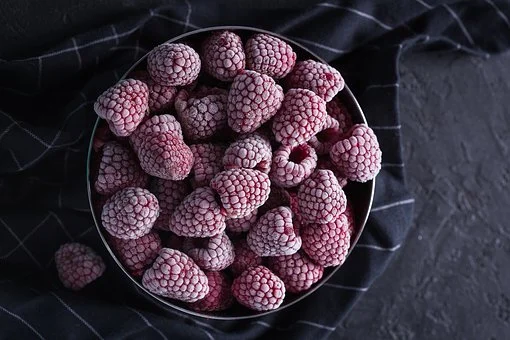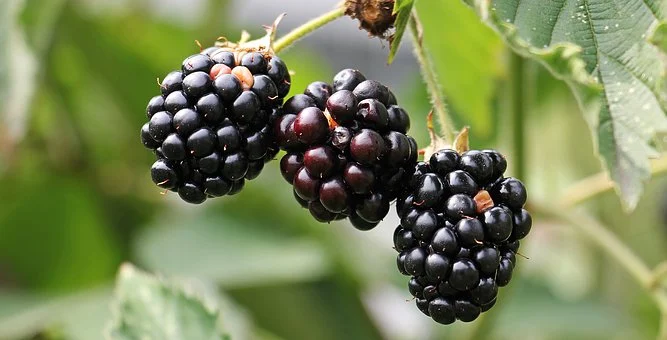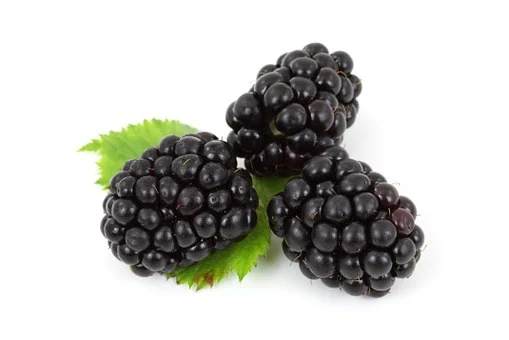How to Grow and Care for Marionberry (Rubus Marion)
Written by Ivy
Nov 11 2021

Marionberry (Rubus Marion) has strong adaptability and can be planted anywhere. Marionberry has also become a very good cash crop. If you want to know how marionberry propagate? Just follow my footsteps and walk into the plantation to see what are the correct steps.
Generally, marionberry will start flowering in late May, and the flowering period will last until early July. At this time, marionberry's fruit has begun to mature, and there are still berries maturing until mid August. Double cropping marionberry bears fruit twice a year, and the fruit ripens until frost falls.
If the warm period of day and night is prolonged in late autumn, and the soil is cooled down, it can cause freezing injury. Marionberry does not have enough time to adjust its resistance to adapt to the lower temperature, resulting in freezing injury. Freezing injury can cause the decay of the whole plant from bud to stem, and the light one will also block the water flow in the stem. In this case, the stem usually sprouts in spring, but marionberry's new shoots are easy to wither under the condition of heat or lack of water.
Marionberry's roots have high requirements for oxygen, while the oxygen content of the flooded soil is very low, which can drown the roots. In order to determine the best soil drainage, several 91cm deep pits can be dug. If the subsoil is brown or reddish brown, the soil is probably well drained; The subsoil is yellow or gray, and the organic matter is variegated. The drainage of this soil is poor, so we should avoid this site condition; Site conditions with ponding after rain should also be avoided.
Loganberry, Marionberry, Raspberry, and Tayberry are all of high nutritional value. Lean more here.
As for marionberry singing propagation, we must choose high-quality seeds. If there are no good seeds, it directly means planting failure. It is best to select the seeds picked in that year and preserved scientifically. The seeds should be full, without damage and disease, so as to ensure the germination rate. Marionberry seeds need to undergo germination treatment before sowing. Soak the seeds in warm water until the epidermis cracks and turns white.
We should propagate marionberry in a sunny place, and the soil in the planting area should be slightly acidic or neutral, loose and fertile, and well drained. The soil environment also has a great impact on the germination and growth of raspberry seeds. To provide it with a suitable environment, its germination rate can be improved.
Marionberry's seeds are relatively small. We usually sow them by sowing. We should spread the seeds evenly in the soil and cover the soil layer about two centimeters thick. After sowing, water should be poured to keep the soil moist and covered with straw to keep warm and moist.
Read Next:
How to Grow and Care for Strawberry Begonia
Ilex Glabra Grow Care for Inkberry Holly
American Elderberry Ambucus Canadensisprofile
Marionberry Quick InfoWhen to Plant MarionberryWhen does Marionberry Bloom&HarvestMarionberry Care in DetailMarionberry WateringMarionberry SoilMarionberry LightMarionberry TemperatureMarionberry HumidityMarionberry FertilizerMarionberry PruningMarionberry RepottingMarionberry Pest & Disease ControlMarionberry PropagationMarionberry Propagation from CuttingMarionberry Propagation from SeedMarionberry Benefits
Marionberry Quick Info
| Botanical/Scientific Name | Rubus Marion |
| Common Name | Marionberry |
| When to Grow/Bloom/Harvest | Plant in the early spring/Bloom in the Early Summer/Harvest in mid-to-late summer |
| Uses | Desserts |
| Origin | Corvallis |
| Light Care | Full sun |
| Soil Care | Most soil types so long as they drain well |
| Temperature Care | Much warmer temperatures (in the 20sºF) |
| Humidity Care | Evenly moist 2 inches beneath the surface |
| Watering | Require around 1-2 inches of water per week |
| Pruning Care | Prune old canes |
| Fertilizer Care | A granular fertilizer |
| Propagation | Propagated by Cuttings |
| Toxic | May be toxic to your dog |
| Fruit Color | Deep, dark purple |
When to Plant Marionberry
Marionberry's good sowing time is March and April in spring and October and November in autumn. Marionberry's sowing germination rate is the highest in these two time periods. Of course, this planting time should also be determined according to the climate of the planting area. Only by adjusting measures to local conditions can plants grow better.When does Marionberry Bloom&Harvest
Marionberry can blossom, of course. Only after flowering can she bear fruit. Marionberry flowering period is generally between February and March, and its color is white. Normally, flowers can bloom every other year after planting, but marionberry has a small number of flowers. During the management period, we should pay attention to let it bask more in the sun. It is a positive branch plant, and its growth will be better when it is fully illuminated. In the growing season of marionberry, we have to fertilize and water frequently.Generally, marionberry will start flowering in late May, and the flowering period will last until early July. At this time, marionberry's fruit has begun to mature, and there are still berries maturing until mid August. Double cropping marionberry bears fruit twice a year, and the fruit ripens until frost falls.
Marionberry Care in Detail

Marionberry Watering
Marionberry needs water during growth. Water will be consumed during growth and fruiting period, so it needs to be supplemented. It should be watered regularly during growth to ensure that the growth needs are met. We don't water marionberry directly to the root. It's best to sprinkle it around and replenish water through soil infiltration. If you just bought or just changed the basin, such marionberry needs to be watered immediately, which can also promote the later growth.Marionberry Soil
Marionberry is a perennial plant. The selection of soil and plot is related to the economic growth years and yield of raspberry. More than 80% of marionberry's roots are distributed within 10 ~ 30cm of the soil surface, so we should try to choose plots with leeward and sunny, more snow in winter, sufficient rainfall in summer and fertile soil. Marionberry can also be planted in plots with heavy viscosity, poor aeration soil, heavy salt alkali land, barren soil and gravel land after improvement.Marionberry Light
Light is related to the growth, yield and fruit quality of marionberry stem. Generally speaking, the stems exposed to sunlight bear more fruit. When the light intensity increases, the yield of each plant will increase significantly. Usually we can use pruning or scaffolding to solve the problem of insufficient light intensity. Regulating the amount of light taken by marionberry crown interception is only one factor controlling plant development, and the other factor is the length of sunshine. People can't change the length of sunshine in the field, but other technical measures can be adopted.Marionberry Temperature
Temperature has many effects on marionberry. When marionberry's low temperature requirements were met, plants no longer dormant and began to be sensitive to cold. Therefore, the change of winter temperature can make freezing injury more frequent, not only the influence of absolute low temperature. For this reason, summer fruit varieties are cultivated on the north slope and try to reduce the direct radiation of winter sunshine.If the warm period of day and night is prolonged in late autumn, and the soil is cooled down, it can cause freezing injury. Marionberry does not have enough time to adjust its resistance to adapt to the lower temperature, resulting in freezing injury. Freezing injury can cause the decay of the whole plant from bud to stem, and the light one will also block the water flow in the stem. In this case, the stem usually sprouts in spring, but marionberry's new shoots are easy to wither under the condition of heat or lack of water.
Marionberry Humidity
Marionberry showed poor performance in the transitional humid soil, which may be caused by more pathogens in the wetter soil. Phytophthora is a common disease source of raspberry roots. Marionberry seedlings that can tolerate wet soil have stronger natural resistance to Phytophthora.Marionberry's roots have high requirements for oxygen, while the oxygen content of the flooded soil is very low, which can drown the roots. In order to determine the best soil drainage, several 91cm deep pits can be dug. If the subsoil is brown or reddish brown, the soil is probably well drained; The subsoil is yellow or gray, and the organic matter is variegated. The drainage of this soil is poor, so we should avoid this site condition; Site conditions with ponding after rain should also be avoided.
Marionberry Fertilizer
If we want marionberry to produce high yield, we need to increase nutrition in the planting soil, and add some farm fertilizer, organic fertilizer and compound fertilizer in the soil. These fertilizers are essential. Adding such fertilizer will make the soil more fertile. And can produce high yield. We also need to add disinfectants to the soil, which can make the soil free of bacteria, very clean, suitable for marionberry's growth, reduce the breeding of diseases and pests, improve the quality, and add some straw and straw ash to the soil. It can make the soil more loose, which will reduce the hardness of the soil. It can make the soil more fertile, loose and free of bacteria. In this way, marionberry can improve its quality and increase its income with high yield.Marionberry Pruning
Marionberry pruning is mainly carried out in three times, with different emphasis in different periods. We can choose to prune the new buds just after they grow in March, so that you can intuitively observe the dead branches and full bud points.Marionberry Repotting
From March to April or September to November every year, after marionberry repotting in early spring, the root system can absorb more nutrition, the new branches grow and the crown expands rapidly. It's hot in summer. Please don't change pots or plant on the ground at will. It's easy to suffocate the roots and cause plant death in serious cases. Marionberry repotting can also be carried out one month before autumn and winter. During the incubation period of potted raspberry flower buds, phosphorus and potassium fertilizer should be added. Do not use organic fertilizer or nitrogen fertilizer alone.Marionberry Pest & Disease Control
In the process of propagating marionberry, many diseases and pests may breed due to improper maintenance. Stem rot is the main disease. We need to spray 500 times of methyletobuzine or 500 times of thiram at the beginning of the disease. If you are infected with spot disease, you need to spray aluminum ethylphosphate. If you are infected with root rot, you need to apply fungicides to the soil after the disease. Marionberry pests mainly include willow bat moth and raspberry perforator moth. We need to spray deltamethrin for treatment.Loganberry, Marionberry, Raspberry, and Tayberry are all of high nutritional value. Lean more here.
Marionberry Propagation

Marionberry Propagation from Cutting
Marionberry propagation by cuttings is suitable in early spring. About February and March in early spring, the temperature starts to rise, the growth momentum starts to sprout, and the survival rate of cutting is high, which is also conducive to future growth. We can cut robust semi lignified green branches from well-growing and robust mother plants, ensure that there are 2-3 nodes on the cuttings, prepare the sand bed for disinfection, and then cut the prepared marionberry cutting propagation branches into the sand bed. After cutting, pour water for a second time, and transplant after rooting.Marionberry Propagation from Seed
The good germination temperature of marionberry seeds is about 15 ~ 20 degrees. Maintaining an appropriate temperature can make its germination rate reach the highest. Therefore, marionberry usually sows in spring and autumn. March and April are the best sowing time in spring, and October and November are the best sowing time in autumn.As for marionberry singing propagation, we must choose high-quality seeds. If there are no good seeds, it directly means planting failure. It is best to select the seeds picked in that year and preserved scientifically. The seeds should be full, without damage and disease, so as to ensure the germination rate. Marionberry seeds need to undergo germination treatment before sowing. Soak the seeds in warm water until the epidermis cracks and turns white.
We should propagate marionberry in a sunny place, and the soil in the planting area should be slightly acidic or neutral, loose and fertile, and well drained. The soil environment also has a great impact on the germination and growth of raspberry seeds. To provide it with a suitable environment, its germination rate can be improved.
Marionberry's seeds are relatively small. We usually sow them by sowing. We should spread the seeds evenly in the soil and cover the soil layer about two centimeters thick. After sowing, water should be poured to keep the soil moist and covered with straw to keep warm and moist.
Marionberry Benefits
Marionberry has good medicinal value. Its roots, stems, leaves and fruits can be used as drugs. Marionberry's roots can not only treat some rheumatic diseases, but also promote blood circulation and remove blood stasis, but also detoxify. They can be used to treat some rheumatic, low back pain, dysentery and other diseases, If bitten by a poisonous snake, it can also be used to detoxify. Marionberry contains natural anticancer substances, even more than blueberries, so it can be ranked first. Moreover, its sugar content is also very high, several times higher than other fruits, and the content of vitamins is the same. Regular use of some can not only have the effect of beauty, beauty and anti-aging, but also prevent some tumor diseases.Read Next:
How to Grow and Care for Strawberry Begonia
Ilex Glabra Grow Care for Inkberry Holly
American Elderberry Ambucus Canadensisprofile
Latest Updated
- Benefits of Bugleweed - 7 Science-backed Health Benefits
- Bugleweed Dangers & Side Effects - Is It Poisonous?
- How to Plant Evergreen Trees - What You Should Know
- When to Plant Evergreens - Grow Guide for Evergreen Trees
- 12 Wonderful Evergreen Shrubs for Your Garden
- 12 Popular Evergreen Plants with Pictures for Beginners
- When And How To Prune A Lilac Bush Like a Pro
- How to Grow & Care for Lilac Vine (Hardenbergia Violacea)
- Japanese Lilac Tree (Syringa Reticulata) Care & Propagation Guide
- Shumard Oak Pros and Cons - What to Know
Popular Articles
- Winter maintenance of Antirrhinum Majus
- How to Grow Terminalia Mantaly Tree
- How to Grow and Care for Crossostephium Chinense
- How to grow Antirrhinum Majus in spring
- Peristeria Elata (Dove Orchid) Profile: Info & Care Guide
- Underwatered Snake Plant (Sansevieria Trifasciata) - Signs And How To Fix
- How to Care for Brazilian Jasmine Plant (Mandevilla Sanderi)
- How to Grow & Care for Graptopetalum Purple Delight in Summer
- Rosa Chinensis (China Rose): Plant Growing & Care Tips
- How to Care for Baby Sun Rose (Aptenia Cordifolia)